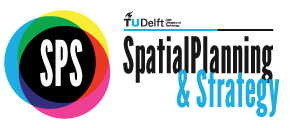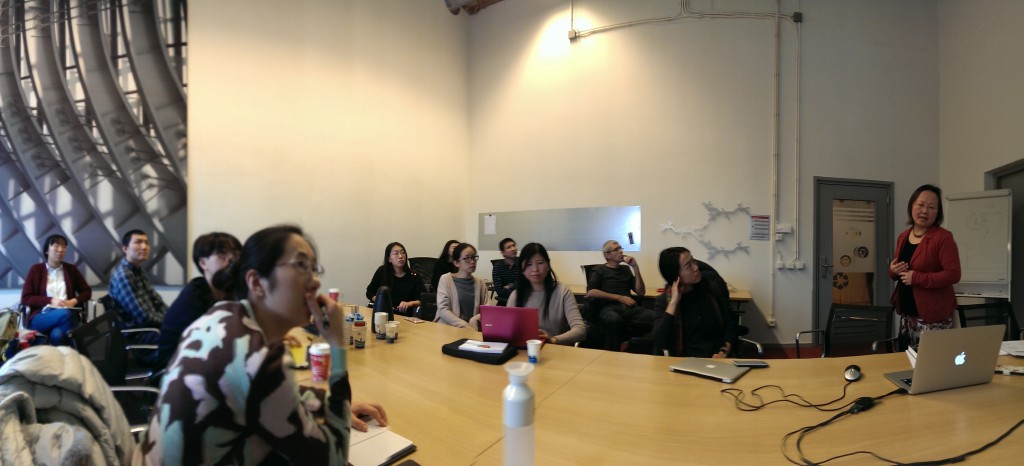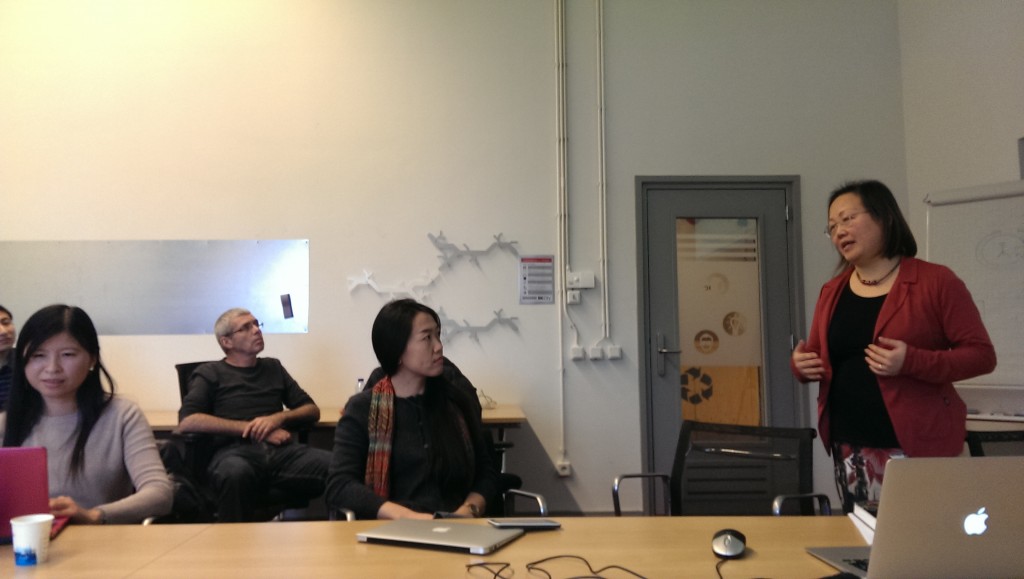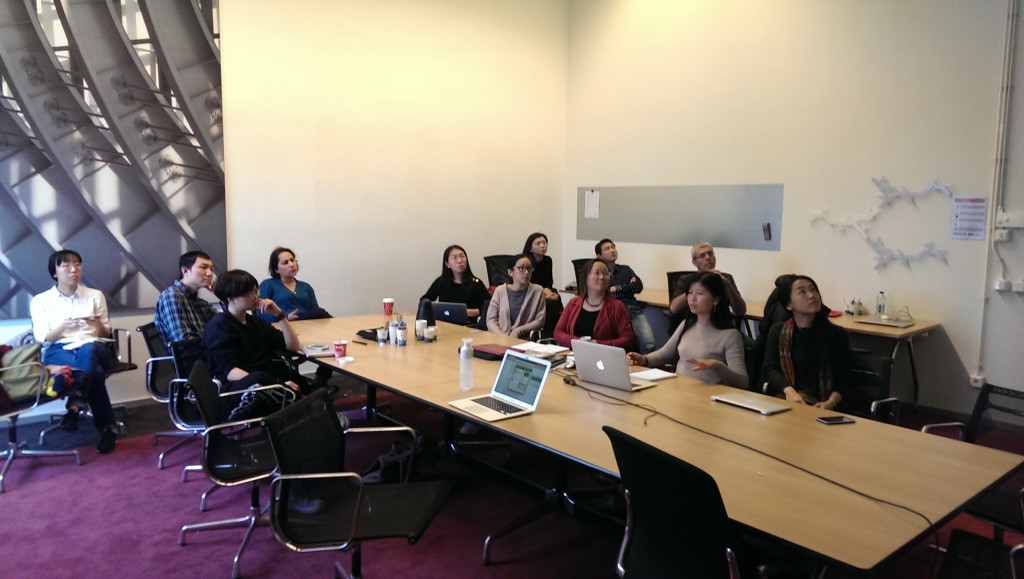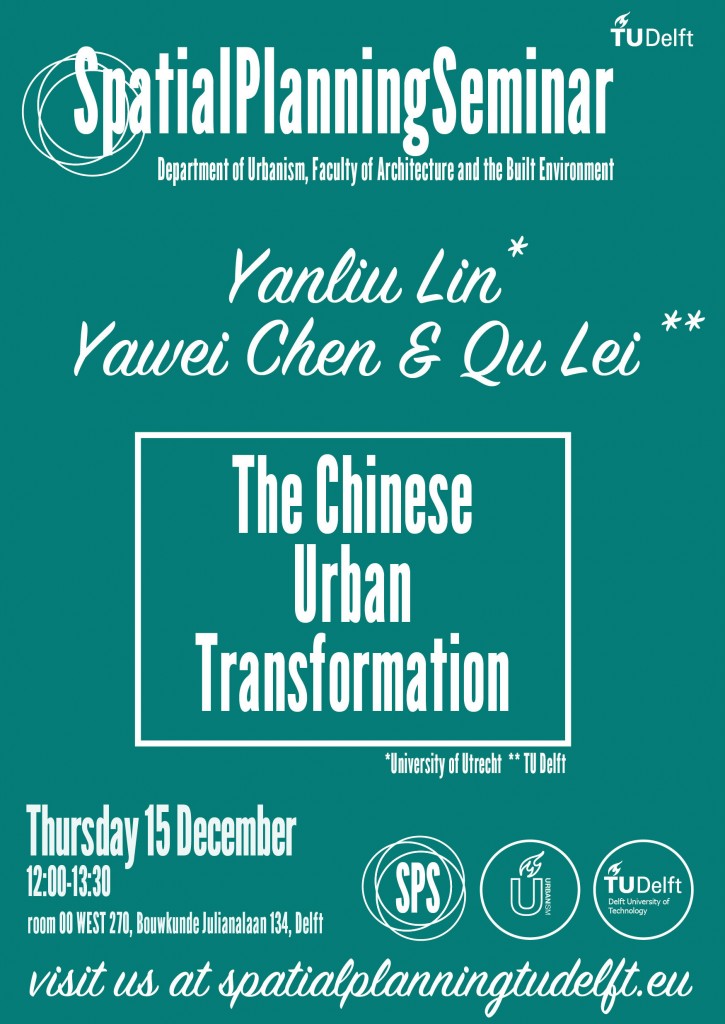 Special edition of SPS Seminar on the Chinese Urban Transformation was organised on Thursday 15 December. It included presentations from three speakers:
Special edition of SPS Seminar on the Chinese Urban Transformation was organised on Thursday 15 December. It included presentations from three speakers: Yanliu Lin (University of Utrecht); Yawei Chen (TUD, MBE, BK); Lei Qu (TUD, Urbanism, BK). While adopting different perspectives and focusing on different cities (Guangzhou, Shanghai, Shenzhen), the three speakers shared a common focus on new trends and innovations in the economic, social and urban realm that have a major impact on the ongoing shifts in Chinese cities, namely from expansion to redevelopment, and from manufacturing economy towards knowledge and service economy.
Spontaneous Urbanism: The Influence of ICT and E-commerce on Social and Spatial Transformation in China
Urbanization and urban transformation in China have been influenced by its rapidity of rural-urban migration, land property-based urban expansion, and the urban-rural duality under the household registration. The recent development of the Internet, smartphones and online social networks contributes to the rapid growth of e-commerce, which becomes more and more important in economic development and is promoting new patterns of social and spatial transformation of cities and villages in China. Influenced by ICTs and e-commerce, human resources and economic entities in urban and rural areas are getting increasingly equal access to opportunities. There is the booming of Taobao villages which have a high concentration of rural e-tailers. E-commerce is exploiting the locational assets (physical, social, economic and governance wise) of Taobao villages tactically and strategically to its advantage and simultaneously is benefiting their development. There is emerging spontaneous urbanism, which is driven by e-commerce and influenced by technical and production networks, social networks of rural migrants, and new forms of governance.
Re-shaping Urban Form and Social Relations: New Planning and Design Methods for Urban Regeneration in Shenzhen
by Lei Qu
Shenzhen, known as the world factory, is changing into a world city. Such transformation is happening mainly within built-up areas, due to a shortage of land availability for urban expansion. Although it is a new town rapidly developed in the past three decades, the city is already facing issues related to transformation of the built up areas. This presentation intends to introduce new planning and design methods for urban regeneration in Shenzhen in the current context of industrial upgrading and migration, using Dalang neighborhood as an example. The strategy attempts to reshape urban form and social relations by creating common interests among stakeholders, striving towards an inclusive, liveable and vital city scenario.
State, market, society and the development of knowledge clusters in Chinese cities: The case of Shanghai
by Yawei Chen
Chinese cities have been engines of economic growth. They have for a long time enjoyed the advantage of low wage, low value-added production to become world factory and have thus lift millions from poverty. As they expand in size and number, they are under increasing strain. How to maintain vital economic growth, while creating sustainable livable cities for all remains the leading urban challenge facing. Chinese cities like Shanghai and Beijing in particular focus their city strategies in developing knowledge-based economy and creating their image as city of innovation in the next several decades. What strategies have been explored in help creating urban platforms for knowledge and innovation? In what way have the agents of these cities facilitate the development of knowledge city? What experience can Chinese cities borrow the experience of European cities in developing knowledge city? This presentation attempts to understand the conditions in developing a innovation, how far Shanghai has developed these conditions and what specific challenges Shanghai faces as a fast growing international metropolis to become a knowledge city. The development of high-tech clusters and creative clusters will be used as cases to examine Shanghai’s practice in developing its hardware environment and software to accommodate, transfer and produce knowledge. To further develop itself as a knowledge city, Shanghai’s strategy 2050 should pay more attention to the social and cultural dimension of the city and an enabling environment that facilitates and accommodates creativity and innovation. In term of governance structure, beside a strong leadership with strong organizing capacity, a broad partnership of public, private, academia and community should be explored to facilitate and support the development of knowledge city.
Please follow and like us:
 Special edition of SPS Seminar on the Chinese Urban Transformation was organised on Thursday 15 December. It included presentations from three speakers: Yanliu Lin (University of Utrecht); Yawei Chen (TUD, MBE, BK); Lei Qu (TUD, Urbanism, BK). While adopting different perspectives and focusing on different cities (Guangzhou, Shanghai, Shenzhen), the three speakers shared a common focus on new trends and innovations in the economic, social and urban realm that have a major impact on the ongoing shifts in Chinese cities, namely from expansion to redevelopment, and from manufacturing economy towards knowledge and service economy.
Special edition of SPS Seminar on the Chinese Urban Transformation was organised on Thursday 15 December. It included presentations from three speakers: Yanliu Lin (University of Utrecht); Yawei Chen (TUD, MBE, BK); Lei Qu (TUD, Urbanism, BK). While adopting different perspectives and focusing on different cities (Guangzhou, Shanghai, Shenzhen), the three speakers shared a common focus on new trends and innovations in the economic, social and urban realm that have a major impact on the ongoing shifts in Chinese cities, namely from expansion to redevelopment, and from manufacturing economy towards knowledge and service economy.